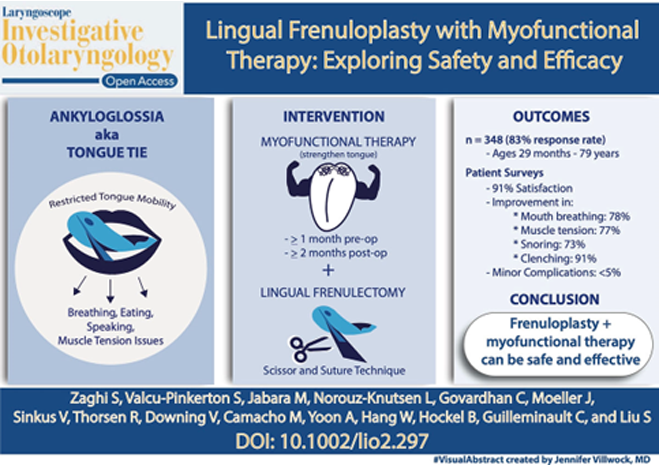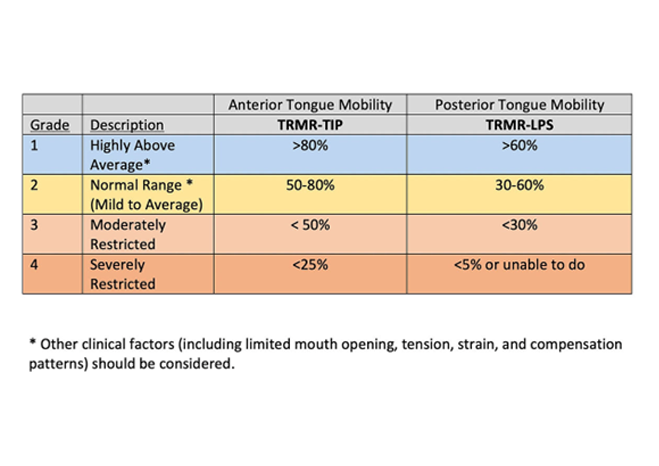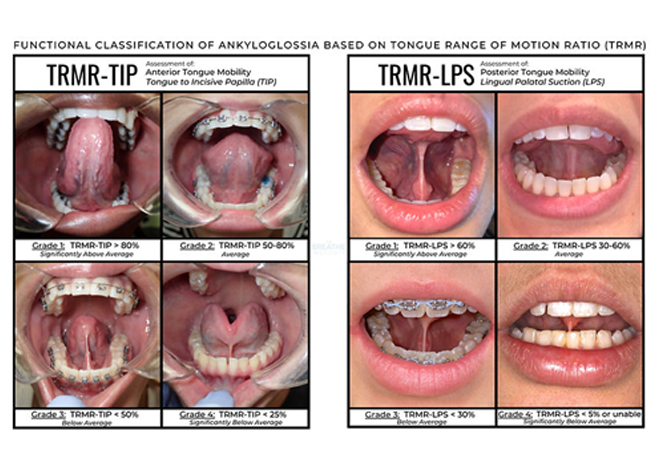Myofunctional Therapy Exercises May Help to Improve Sleep Apnea –
Strengthen Your Tongue With Targeted Movements
Myofunctional therapy is an oral health training program that includes exercises meant to improve the strength of the muscles within the oropharynx, including the tongue. It helps to reinforce the correct position of the tongue within the mouth.
The oropharynx is the part of the body that includes the mouth and throat. In simple terms, it is a tube lined with muscular tissues. These muscles help us to eat, talk, and breathe. They also help to keep the airway open, especially during sleep. When the muscles of the oropharynx are weak, they may disrupt the flow of air and snoring may ensue. If they let the tube collapse, the airway becomes blocked, such as happens during sleep apnea. Moreover, a weak and floppy tongue may fall back into the throat and create an obstruction.



Research has shown that Myofunctional Therapy may be helpful for improving sleep disordered breathing such as snoring and mild to moderate OSA (obstructive sleep apnea ). It has also been shown to prevent relapse of sleep apnea after surgical treatment. In addition, myofunctional therapy exercises play a critically important role in recovery after lingual frenuloplasty and to maintain the results of orthodontic treatment.
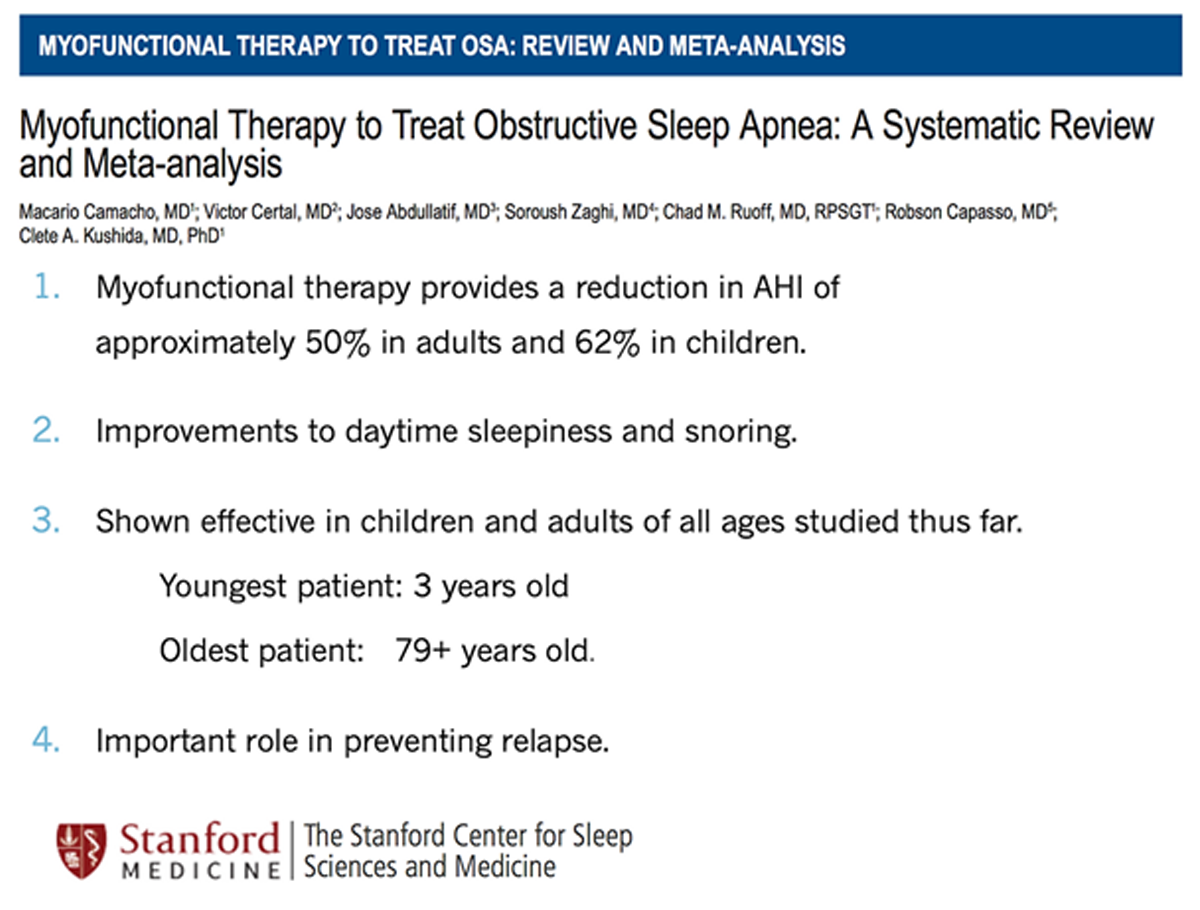
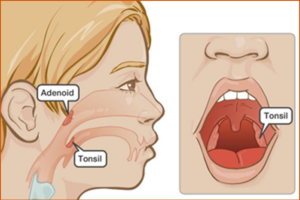 Tonsils and adenoids are part of the immune system in children. Enlarged tonsils and adenoids reduce or prevent nasal breathing. In addition, it can impede proper function of the soft palate and middle ear and may cause OSA. Enlarge tonsils and adenoids can be suspected if one has an open mouth posture, painful swallowing, tongue thrust, amongst other signs. Enlarged tonsils may lead to chronic open mouth posture, bad breath, mouth breathing, tongue thrust, sleep disordered breathing, dental malocclusion and can affect jaw and facial development. Enlarged adenoids may also contribute to poor nasal breathing, chronic open mouth posture, sleep disorders, and ear infections.
Tonsils and adenoids are part of the immune system in children. Enlarged tonsils and adenoids reduce or prevent nasal breathing. In addition, it can impede proper function of the soft palate and middle ear and may cause OSA. Enlarge tonsils and adenoids can be suspected if one has an open mouth posture, painful swallowing, tongue thrust, amongst other signs. Enlarged tonsils may lead to chronic open mouth posture, bad breath, mouth breathing, tongue thrust, sleep disordered breathing, dental malocclusion and can affect jaw and facial development. Enlarged adenoids may also contribute to poor nasal breathing, chronic open mouth posture, sleep disorders, and ear infections.
When a child has surgery to remove tonsils and adenoids because of frequent infections/inability to breathe through nose/sleep apnea. The immune tissue often regrows, and the airway becomes affected again, and the problems and symptoms can return. Relapse rate for sleep apnea and airway constriction after tonsils and/or adenoids are removed is greater than 50%. Myofunctional therapist after removing tonsils/adenoids to help train the soft tissues of the face, neck, and mouth to function properly and foster the ability to breathe through the nose rather than the mouth, ensuring proper oral posture, swallowing pattern, nasal breathing. Nasal Breathing Is the Key to Reversing Sleep Disordered Breathing Confirmation. This also helps prevent regrowth of tonsil and adenoid tissue. Seeing an ENT and myofunctional therapist is important when enlarge tonsils and adenoids are present.
The Power of The Tongue and It’s Connection To Your Overall Health
Our genes tell the bone how to grow but our muscles tell the bone where to grow. By age 6, 80% of upper and lower growth is complete and by age 7 to 12, is 90% complete. The posture of the tongue can have a significant impact on the skeletal development of the face, the position of teeth, and breathing. Therefore, proper oral resting posture of the muscles and its functioning are essential in growth and development. The tongue should rest in the top of the mouth, filling up the entire palate. When the tongue is resting in the the correct position, it shapes the maxilla (upper jaw) and guides the growth of the face. This helps improve nasal breathing, reduce mouth breathing and snoring, as well as improve tongue-base obstruction, and positional sleep apnea and/or UARS.
.
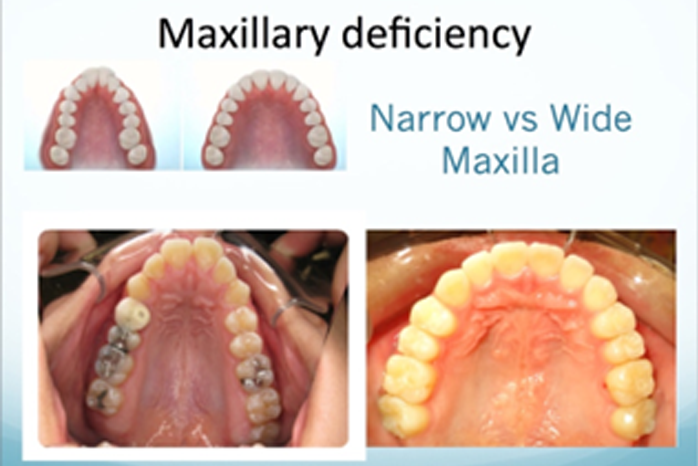

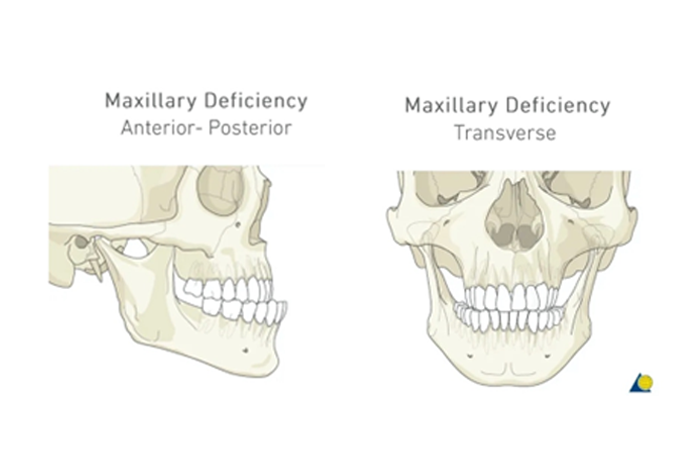
Conversely, tongue tie (lack of tongue mobility) contributes to the development of low tongue posture, open mouth posture, mouth breathing and improper oral rest/ tongue posture, significantly affecting the orthodontic treatment as well as affect the growth and formation of dental and facial structures. Poor oral rest/tongue posture may be linked to health issues like sleep apnea and/or teeth grinding. A short lingual frenulum left untreated at birth is associated with Obstructive Sleep Apnea (OSA) syndrome at a later age. Intervention is the key to optimize craniofacial growth and minimize risk for long term health issues.
Lingual Palatal Suction: Entire tongue should rest up against the palate.
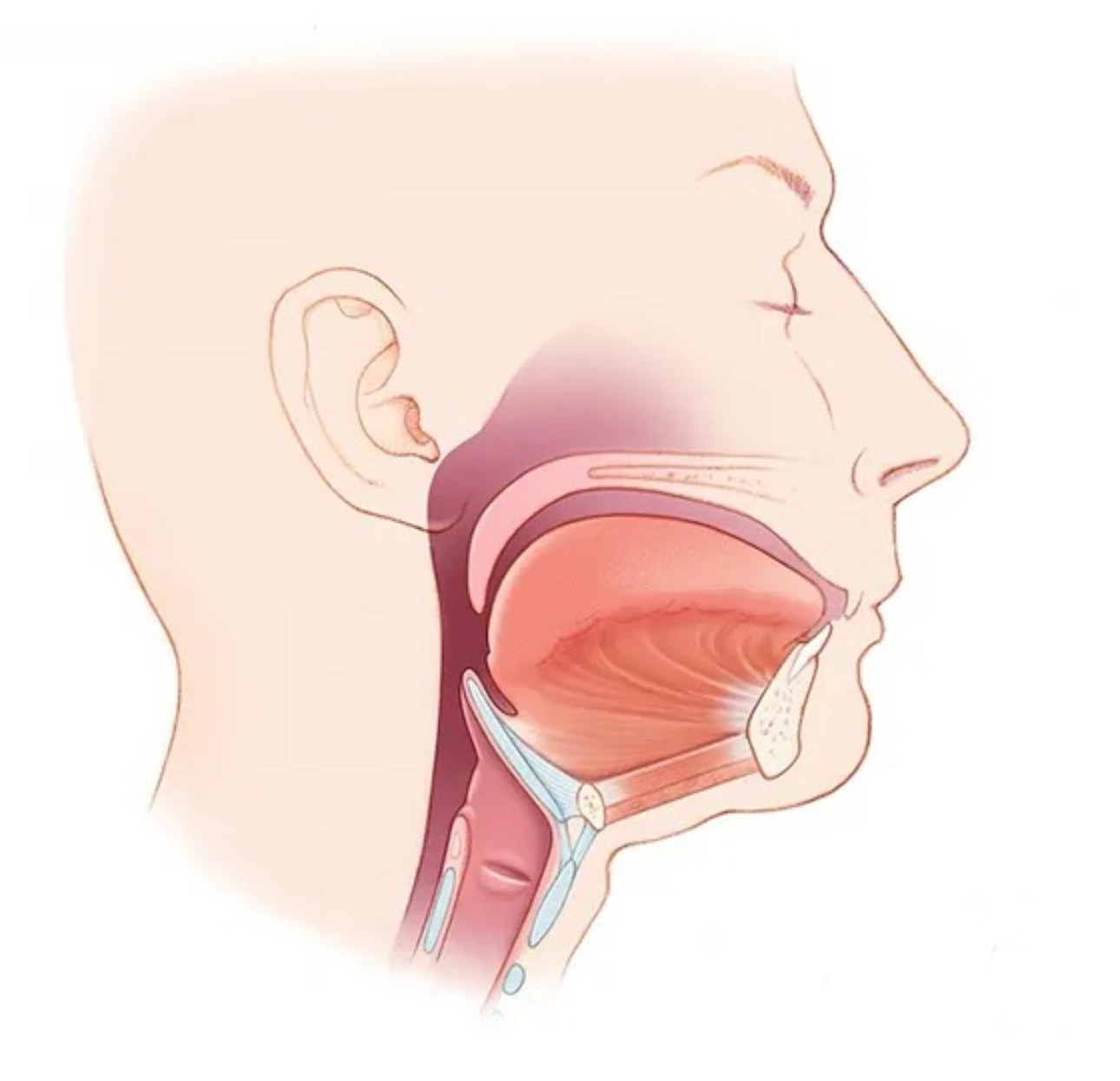
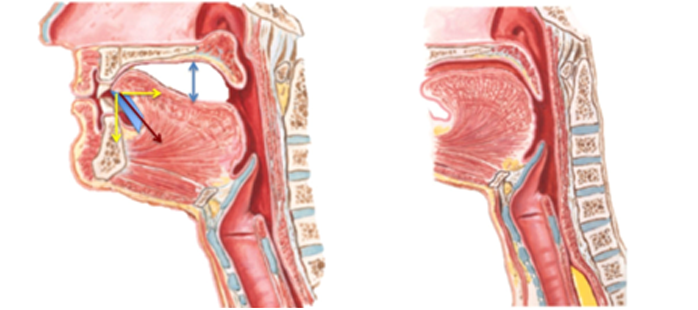
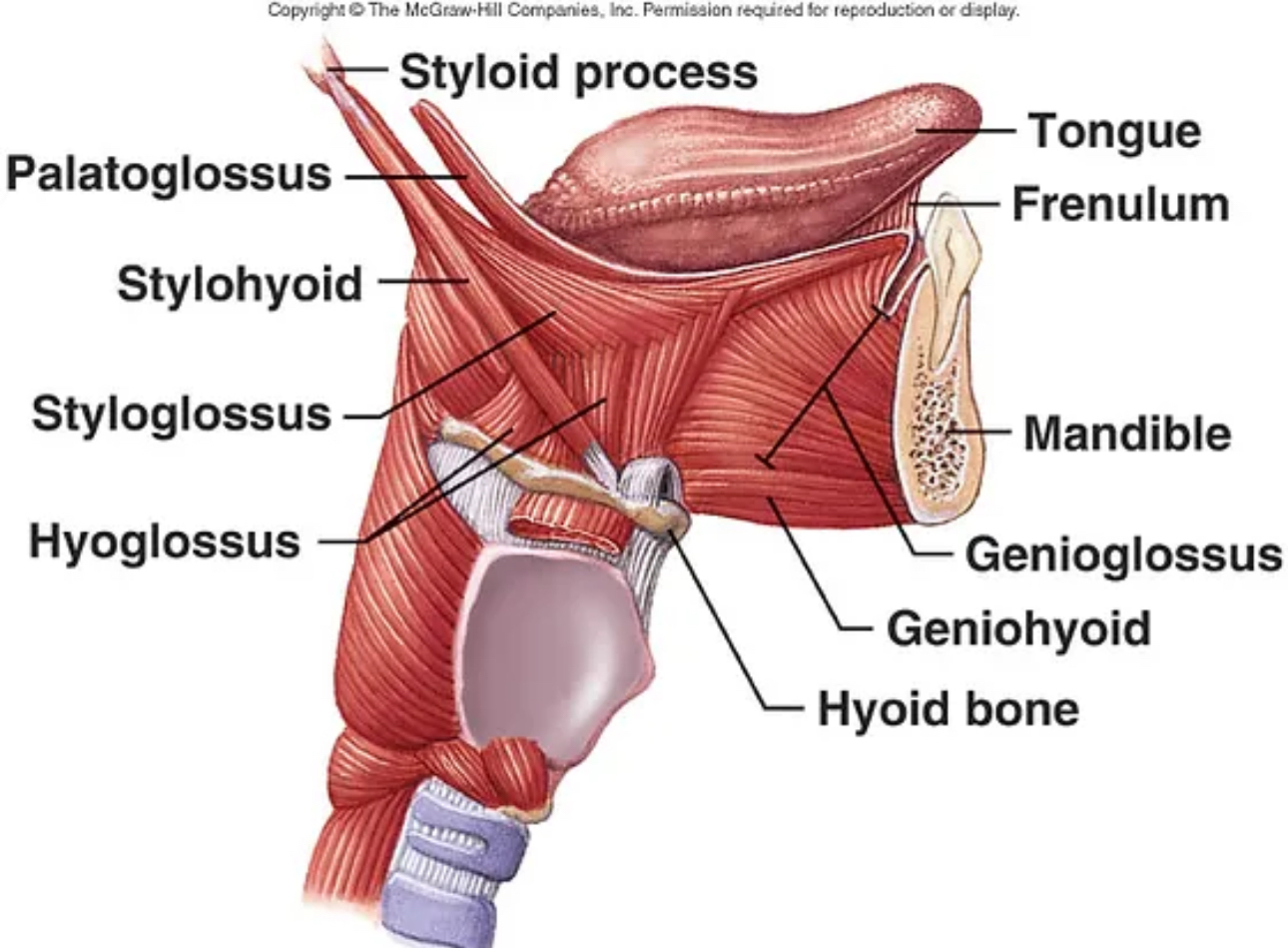
Tongue mobility changes face and jaw development. Fascia covers all the muscles in our body. When fascia is tight because a tongue-tie, the tongue is going to be pulled forward with the floor of the mouth causing fascial restrictions, tension, and pain. These are associated with Tongue -Tie Compensations.
Functional Frenuloplasty:
Myofunctional therapy and lingual frenuloplasty can help patients with low tongue position associated with functional ankyloglossia (tongue-tie). Patients with ankyloglossia may experience difficulty protruding, lateralizing, and most importantly elevating the tip or body of the tongue. Incorporating a multidisciplinary protocol that integrates myofunctional therapy before, during, and after lingual frenuloplasty is safe and potentially effective for the treatment of mouth breathing, snoring, clenching, and myofascial tension in appropriately selected patient candidates. It is highly supportive therapy for any orthodontic treatment to achieve better results in the correction of Orofacial Myofunctional Disorders.

